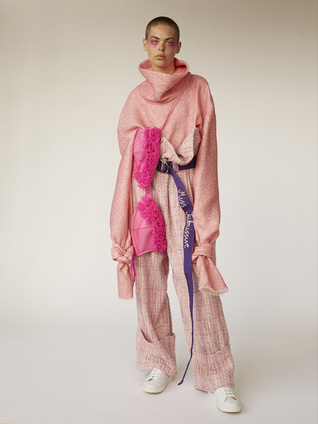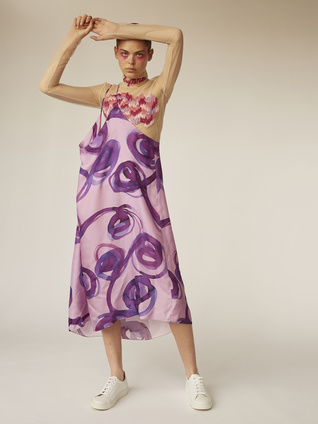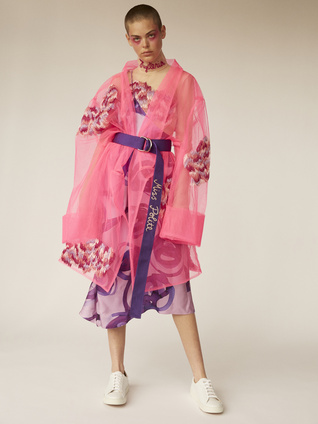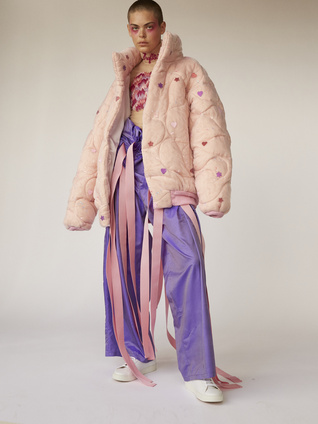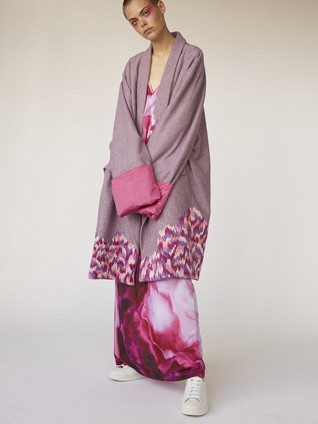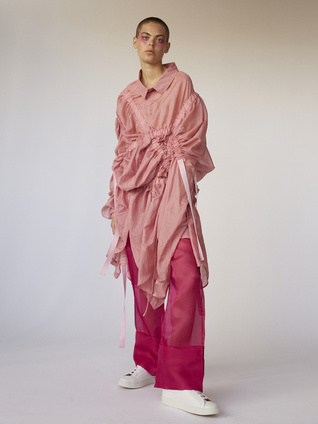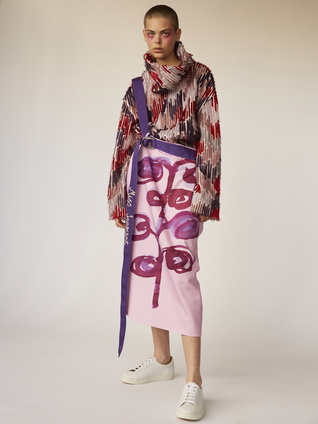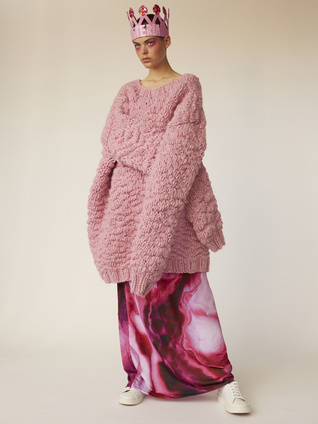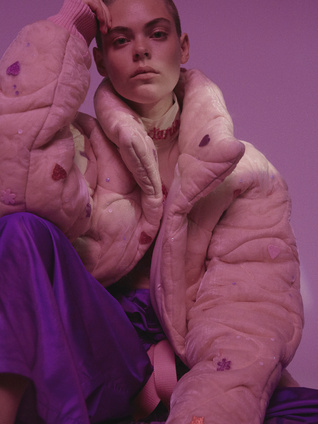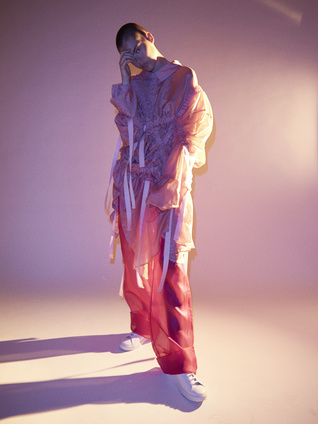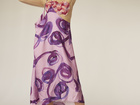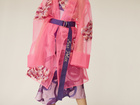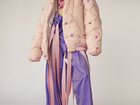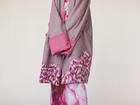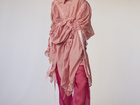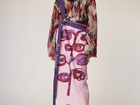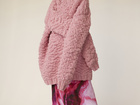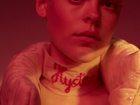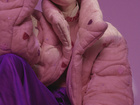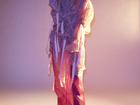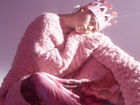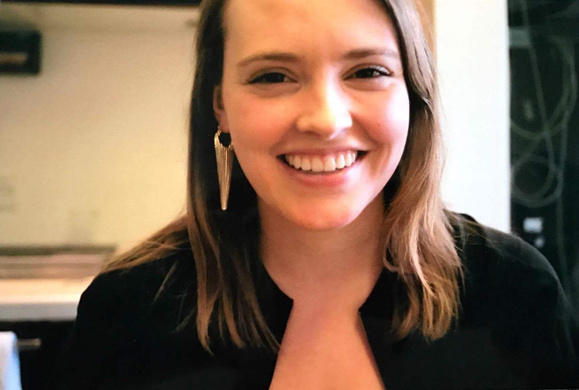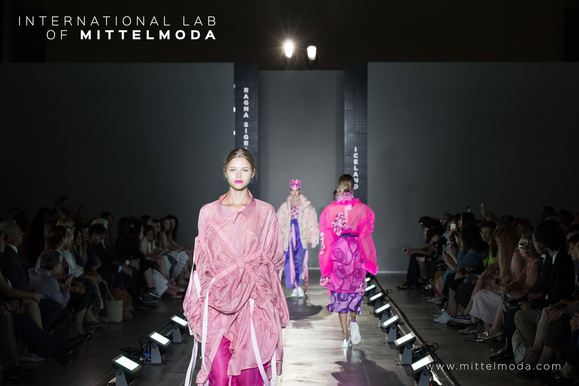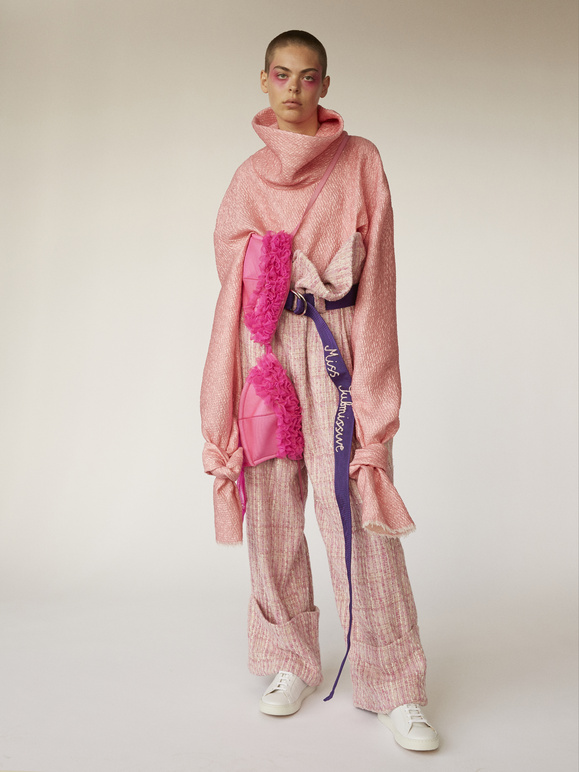When a designer has a particular agenda, fashion can be used for more than simply keeping the body war. For example, clothes can reflect strong opinions and cast the spotlight on social issues. Meet the designer, Ragna Sigridur Bjarnadottir. In her final project she created a collection of clothes that do away with a constricting, stereotypical image of women and explore modern femininity.
What is your final project about?
The title of my final project was ‘Hysteria’. It is a collection of clothes that explore modern femininity, female stereotypes and the gender-specific upbringing of girls. The collection illustrates the emotional tension that comes from being perceived as ‘the weakest sex’, and the social rules that women and girls are subjected to every single day. The collection is rooted in the situation, in which a little girl tries on her mum’s clothes, thereby finding herself enrolled in the ranks of modern womanhood. But it is all too much for her. The clothes are too heavy and too big, and she becomes overwhelmed by the social pressures that comes with being a woman. She drowns in womanhood!
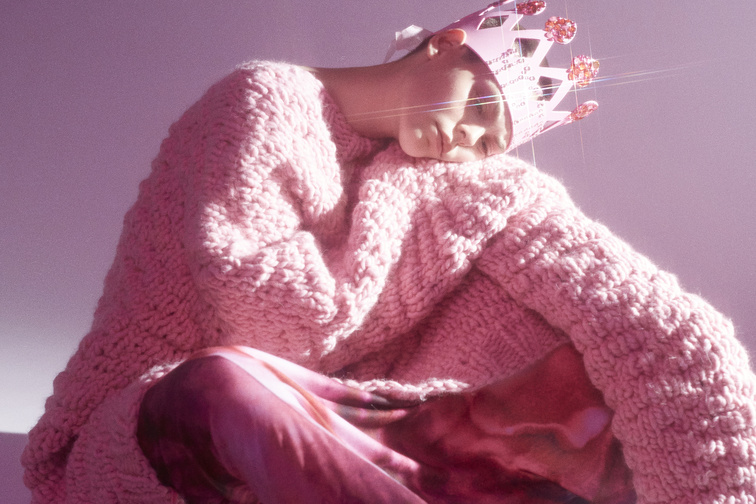
What was your motivation for this project in particular?
I started to explore the process of being brought up as a girl: the restrictions and rules girls are expected to follow, and the pink, glittery world, which most of us are born into. At some point I came across the term ‘hysteria’: a now obsolete medical term that was used to classify sensitive and mentally ill women. The term was used for all sorts of symptoms and ailments. People actually believed that women were sick because they were of the female sex. The uterus caused chaos in their bodies, and they had all sorts of problems because of their hormones. Instead of finding out what was really wrong with the women, the doctors resorted to all manner of ridiculous and cruel methods of treatment to cure them of the disease that being a woman was, in their opinion.
To which UN goals – if any – does your project relate, and why?
My project relates to UN goal Number 5: Gender Equality. I have always been interested in working with womanhood and feminism in my designs, and in my final project I wanted to work on the emotional challenges that come with being a woman. Of f not being listened to or taken seriously, of not being heard and never being regarded as an equal, of being placed in a pink box and told to be quiet, sweet and submissive.
In what way does your project contribute something new to the area you have been working on?
So many things are going on in the world right now, aimed at making women stronger, and we live in strange times, when in some places women have equal rights on paper, yet are still subjected to discrimination in public and in private, while in other places women’s equality is way behind, and little girls are unwanted, treated badly and regarded as inferior. I find it interesting to explore and work on womanhood in a new context, where I can cast the spotlight on the ludicrous social pressure and the suffocating feeling it can impose on women, at the same time creating something beautiful and meaningful.
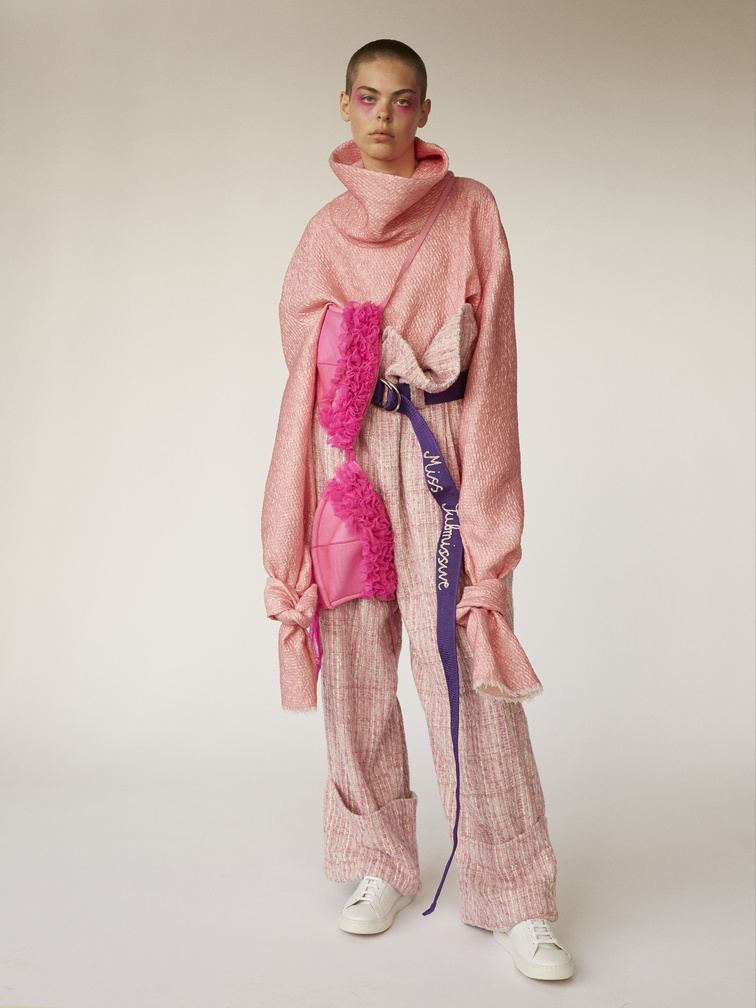
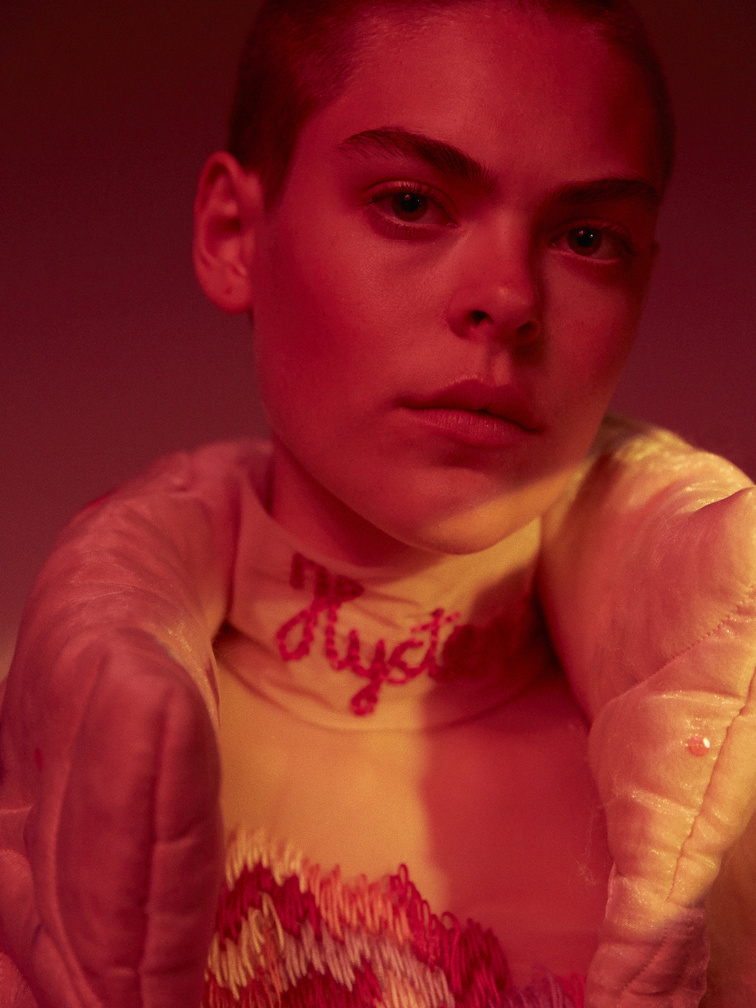
Where do you imagine your degree project will make a difference?
My degree collection is my personal feminist manifesto, and I hope it will get people to think about how we treat girls and tell them that their main merits are being cute and sweet, and about the pressure girls and women of all ages are subjected to in order to fit in with a socially created female template. An to think about how far we have come, but how far there is still to go to complete equality between the sexes.
What methods did you use when working on your collection?
In my design process I experimented with various design elements inspired by my theme. I wanted to create some fabrics, which could express the emotional tensions and the feeling of being ‘squeezed in’. To arrive at the silhouette for the clothes I draped my own clothes on a child-sized mannequin and examined the effect it gave, when the clothes were too big for the body. I also worked with so-called traditional female textile crafts and used them to create something untraditional. For example, I came up with a knitting technique, in which I created an irregular, stretched surface by tweaking the stitches. I also used embroidery, which I let flow over the surface of the clothes.
What are the most enjoyable and the most difficult aspects of designing the way you do?
My entire Master’s course has been a long exploration of my own design aesthetics and what it means to work conceptually and intuitively. Previously, I drew more on visual inspiration for my work, but I have learned to work within a theme, a feeling and a concept, creating designs that reflect those. I sketch much less and work more directly on a dummy, and use my gut feeling to make decisions. I create on the basis of the sense of feeling rather than the sense of sight – and that is fun. For me, it is necessary to take plenty of time and to really work on a project in depth. Not to rush, but to let the ideas wander around in my head and in my sketchpad before making the final decisions. To explore all the possibilities and be open to errors and mishaps along the way – and take advantage of the options that crop up spontaneously. The reason I started working so much with pink, for example, was because my printer ran out of ink, so my inspirational images turned pink. The hard part is trusting your gut feeling and sticking to your decisions, and exploring new, unprecedented options - and avoiding getting bogged down in your own head and your own process.
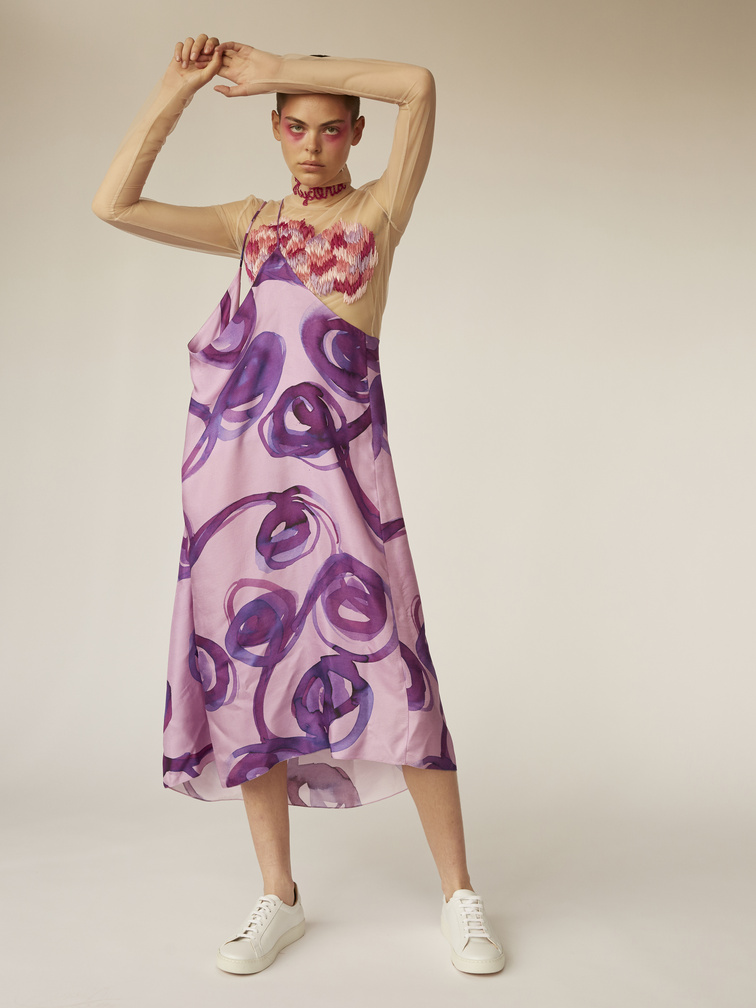
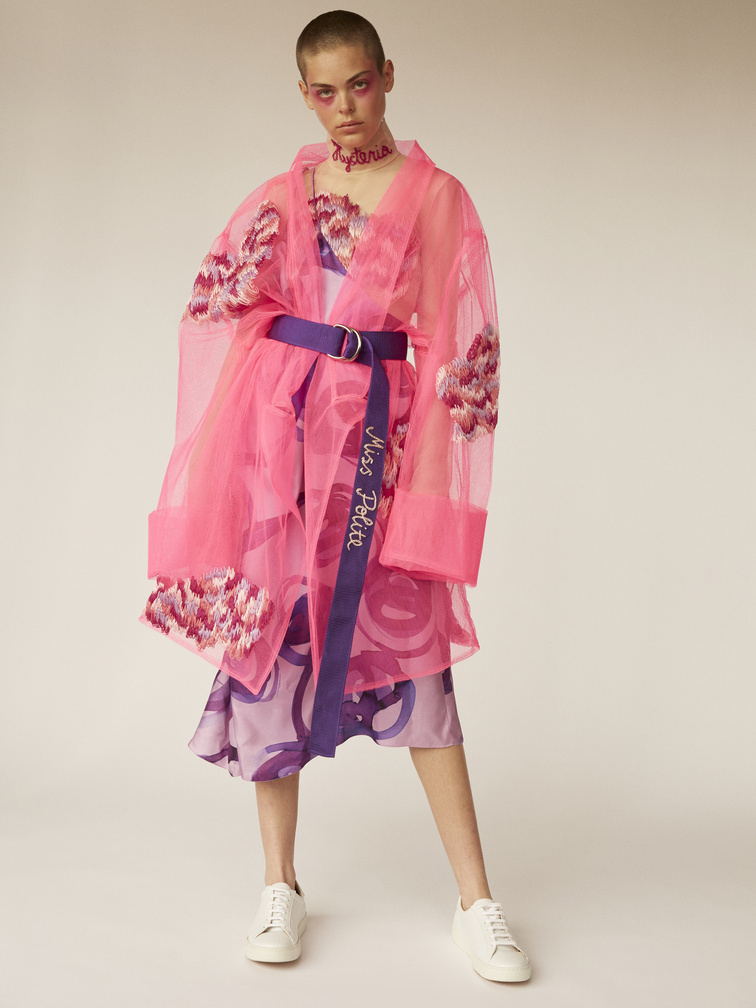
What sort of development potential do you think your final project has?
I loved working on this theme and can imagine refining it and creating projects and possibly exhibitions related to it. My collection is my own personal design manifesto, the aim of which is to show what my design is all about, and maybe to attract like-minded designers with a view to collaborating and working on joint projects in the future. I have already received inquiries from several stylists who have borrowed my clothes for photo shoots - and Lady Gaga’s PR people actually contacted me a couple of weeks ago to borrow a set [NW1] from the collection. I have no idea what will come out of it, but it is a huge honour to get such attention!
What do you think is your greatest strength as a KADK design graduate?
I love the way KADK encourages students to work conceptually and intuitively. In order to do that, we read tons of theory and investigate the world around us with a different approach. We do not necessarily create useful or practical clothes, but explore what clothing is and what fashion can be. We create visions for the future. We deconstruct traditional clothes and galvanise people’s ideas about what clothes actually are. Right now the fashion world just about lives on copies, which is a natural consequence of the fact that everything has to move so quickly. New collections come out every few months/ How are you supposed to design something original in so short a time? Original design requires time and care.
Where do you see yourself career-wise in five years’ time?
In the next few years I would like to gain professional experience by working in the clothing industry. At some point I would like to start my own company, where I can focus on my own vision and aesthetic, but also on sustainability in design and production. The fashion industry really needs a radical change. There is a need for more designers to come up with sustainable solutions for the future.


